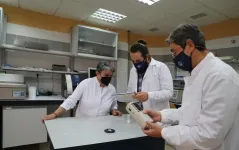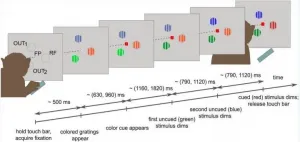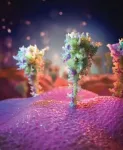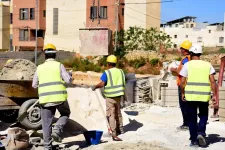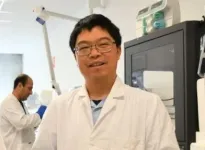Study demonstrates the need to monitor the bit area of event horses
2021-04-07
(Press-News.org) It was found that event horses that wear thin or thick bits in events had a greater risk of moderate or severe oral lesions compared to horses wearing medium-sized bits, while straight bits were associated with lesions in the bars of the horse's mouth.
"Our recommendation is to use a jointed bit of moderate thickness, that is 14 to 17 millimetres, if the size of the mouth is not known, paying particular attention to the handling of mares and both warmblood and coldblood event horses. They were seen to have a greater risk of mouth lesions compared to geldings and ponies," says doctoral student and veterinarian Kati Tuomola from the Faculty of Veterinary Medicine, University of Helsinki.
"Since most mouth lesions are not evidenced as bleeding outside the mouth, the bit area should be monitored, and event organisers should carry out systematic oral inspections," Tuomola adds.
The research group has previously investigated oral lesions in trotters. The object of the current study was event horses, that is horses which compete in events composed of three phases: show jumping, dressage and a cross-country test. The study was conducted in cooperation with the Equestrian Federation of Finland, and participation in it was voluntary.
"As many as 95% of the equestrians invited for the study wanted their horse to participate, for which we are thankful," says a pleased Tuomola.
For the study, 208 randomly selected horses which were 4 to 19 years old were examined in eight events organised in western Finland in 2018 and 2019. The front part of the horses' mouths was examined after a cross-country test, the last phase of the events. A total of 127 of the horses were warmbloods, 52 coldbloods and 29 ponies. Of the 208 horses examined, 52% had lesions in the bit area. Bruises were found in 39% of the horses and wounds in 19%. Among the group, 48% had no acute lesions, while 22% had mild, 26% moderate and 4% severe lesions. Blood was observed inside the mouth of one horse.
Consequently, event horses had fewer and less severe lesions than the trotters studied earlier.
"The field scoring system developed by Kati Tuomola in her doctoral thesis makes it possible to conduct comparative studies of different groups of horses, something that was previously impossible," says Professor Anna Valros from the Faculty of Veterinary Medicine, University of Helsinki.
INFORMATION:
[Attachments] See images for this press release:
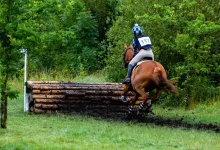
ELSE PRESS RELEASES FROM THIS DATE:
2021-04-07
The global production of sheep's milk is one the rise, in the vast majority of cases used to produce cheese. However, a relatively large amount of milk is needed to produce it, so science is looking for ways to increase its yield; that is, to obtain more cheese using less milk.
Immersed in this task, a team from the Department of Animal Production at the University of Cordoba, led by Professor Ana Garzón, has collaborated with the University of Leon in the search for genetic parameters affecting the cheese production of milk from Churra sheep, one of the oldest and most rustic breeds on the Iberian Peninsula.
After analysing traits related to rennet and milk properties (pH, ...
2021-04-07
The way we move says a lot about the state of our brain. While normal motor behaviour points to a healthy brain function, deviations can indicate impairments owing to neurological diseases. The observation and evaluation of movement patterns is therefore part of basic research, and is likewise one of the most important instruments for non-invasive diagnostics in clinical applications. Under the leadership of computer scientist Prof. Dr Björn Ommer and in collaboration with researchers from Switzerland, a new computer-based approach in this context has been developed at Heidelberg University. As studies inter alia with human test persons have shown, this approach enables the fully automatic ...
2021-04-07
It is more complicated than copy and paste, but digital twins could be way of future manufacturing according to researchers from the University of Kentucky. They developed a virtual environment based on human-robot interactions that can mirror the physical set up of a welder and their project. Called a digital twin, the prototype has implications for evolving manufacturing systems and training novice welders. They published their work in the IEEE/CAA Journal of Automatica Sinica (Volume 8, Issue 2, February 2021).
"This human-robot interaction working style helps to enhance the human users' operational productivity and ...
2021-04-07
To effectively perform any daily task, the human brain needs to process information from the outside world using various cognitive functions. This cognitive processing passes through a dense interconnected network of cells whose physiology is specialized. The interconnected cell network needs to perform this processing of information efficiently and interact cooperatively to provide us, in real time, with useful instructions for living.
Research published on 23 March in the journal Proceedings of the National Academy of Sciences of the United States of America challenges recent scientific advances seeking to find out how cognitive control and sensory information relate to the cortical machinery ...
2021-04-07
New research has for the first time compared images of the protein spikes that develop on the surface of cells exposed to the Oxford-AstraZeneca vaccine to the protein spike of the SARS-CoV-19 coronavirus. The images show that the spikes are highly similar to those of the virus and support the modified adenovirus used in the vaccine as a leading platform to combat COVID-19.
The SARS-CoV-2 virus, which causes COVID-19, has a large number of spikes sticking out of its surface that it uses to attach to, and enter, cells in the human body. These spikes are coated in sugars, known as ...
2021-04-07
Researchers at the Francis Crick Institute, as part of an international collaboration of scientists through the Pan-Cancer Analysis of Whole Genomes Consortium, have analysed the whole genomes of tumour samples from over 2,600 patients with different types of cancer. They identified a high prevalence of genetic diversity within individual tumours, which they further characterised. Their findings confirm that, even at late stages of development, tumour evolution is driven by changes that benefit the cancer.
When cancer cells divide, errors occur in the process of copying their DNA. These copying errors mean that different tumours can be made up of cells presenting a wide range of genetic diversity. This variation is a challenge for doctors as a treatment that ...
2021-04-07
Digitalisation can support transitions towards a more sustainable society if technologies and processes are designed in line with suitable criteria. This requires a systemic focus on the risks and benefits of digital technologies across the three dimensions of sustainable development: the environment, society, and the economy. This is the conclusion of a study prepared by a team of researchers at the Institute for Advanced Sustainability Studies (IASS) in Potsdam. Applying this precautionary approach to digitalisation requires the active involvement of developers, users, and regulators.
Digitalisation ...
2021-04-07
ALS is a progressive neurological disease that attacks the nerves that interact with the body's muscles. The disease typically leads to complete paralysis of the body, robbing patients of their ability to walk, speak, eat and breathe.
Researchers studied ALS patients and healthy elderly volunteers living in Malta who took part in an ongoing study aiming at identifying genetic and environmental risk factors. Malta is a sovereign microstate in the middle of the Mediterranean Sea, and is home to a geographically and culturally isolated population. Recently, Maltese ALS patients were found to have a unique genetic makeup compared to ...
2021-04-07
Bishop Peder Winstrup died in 1679, and is one of the most well-preserved human bodies from the 1600s. Researchers at Lund University in Sweden may now have solved the mystery of why a foetus was hidden in his coffin in Lund Cathedral. DNA from the bishop and the foetus, along with kinship analyses, has shown that the child was probably the bishop's own grandson.
Something is protruding between Bishop Peder Winstrup's two calves. The X-ray reveals small bones. Could it be an animal? When the image is studied more closely, the osteologists from Lund University can see faint signs of what is to become ...
2021-04-07
A novel way to pinpoint and illuminate bone damage promises to make X-rays more efficient at diagnosing bone and other injuries, Flinders University researchers say.
The new technique, looking at potential biomedical applications of an ancient inorganic salt-based aggregation induced emission (AIE) radio-luminescence material, could open new frontiers in medicine including X-ray dosimetry, bioimaging and advanced applications such as optogenetics, says Professor Youhong Tang, from Flinders University's College of Science and Engineering.
The review article, published by Professor Tang, postdoctoral student Dr Javad Tavokoli, colleagues in Hong Kong and Australian technology company Micro-X and, examined the potential of the AIEgen luminogens ...
LAST 30 PRESS RELEASES:
[Press-News.org] Study demonstrates the need to monitor the bit area of event horses

